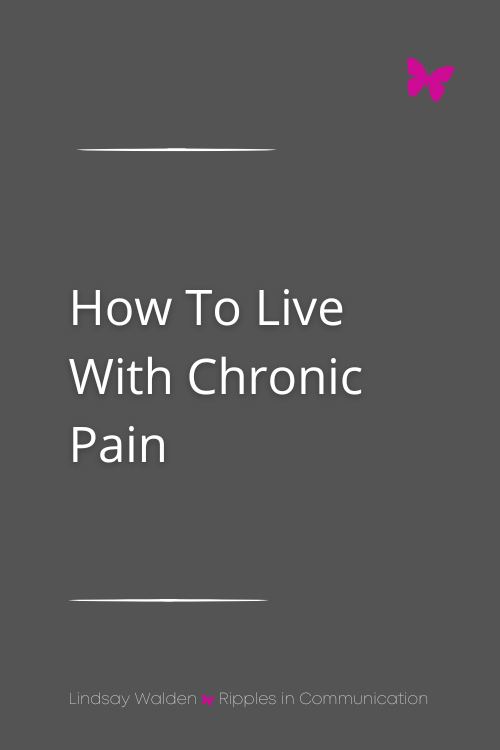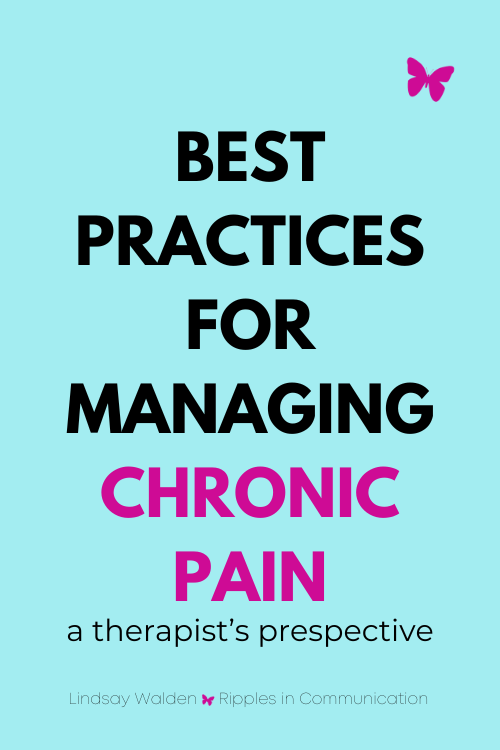How to Live with Chronic Pain: a Therapist's Perspective
Understanding Chronic Pain
Chronic pain stands apart from the discomfort of acute pain due to its persistent, often debilitating, nature. While acute pain signals an immediate issue that typically resolves with treatment or time, chronic pain lingers, integrating itself into one's daily life. This enduring discomfort not only challenges the body but also casts profound shadows over mental health. Individuals navigating these waters must recognize that their journey involves more than physical symptoms; it encompasses an emotional battle as well. Acknowledging this dual struggle is crucial in seeking relief and understanding. It invites a compassionate approach to managing daily pain, emphasizing the importance of emotional wellness alongside physical strategies.
Key Takeaways:
Chronic pain differs significantly from acute pain, embodying both physical persistence and mental challenges.
Recognition of the emotional facets of living with chronic pain is essential for holistic coping strategies.
Managing chronic pain involves a balance of physical remedies and mental health supports, aiming for overall wellness.
Have you gotten my FREE Relationship Communication Guide yet? Start building an authentic, conscious, and thriving relationship with your partner TODAY. Say goodbye to misunderstandings, conflicts, and missed opportunities for a deeper connection. These are the same tips and practical advice I give to my clients every day. With this guide, you'll be equipped to navigate any communication challenge and build a strong and fulfilling bond with your partner. Click the button below to enter your email address and I will send the guide to your inbox right away!
The Emotional Toll of Chronic Pain
Chronic pain management often becomes synonymous with battling emotional turmoil. The constant companion of pain brings with it, not just physical discomfort, but a profound impact on mental health. Dealing with a chronic illness requires resilience, yet the path is strewn with emotions like frustration, anger, and sometimes, despair. It's a daily challenge, one that tests the limits of emotional wellness and the essence of one's vibrancy.
However, acknowledging this emotional toll is the first step toward empowerment. By recognizing the feelings that accompany our pain, we start the journey of coping. This act of self-validation does more than just admit the presence of pain; it opens the door to strategies for pain relief and management. Embracing self-compassion, we can find solace in mindfulness and embrace self-care as methods to alleviate the burden. Cultivating gratitude and staying present prove to be powerful tools in reorienting our perspective, helping us to see beyond the confines of our condition.
Validating Your Pain and Emotions
Accepting the reality of your condition marks a crucial step towards fostering resilience and emotional wellness. I learned that acknowledging one's struggles without judgment paves the way for managing daily pain with more grace. Validating your feelings isn't an admission of defeat; rather, it's an act of self-compassion that acknowledges how dealing with chronic illness challenges both mind and body. This conscious act can significantly shift how you perceive your pain and, by extension, how you live with it.
Engaging in chronic pain therapy or mindfulness exercises can be invaluable strategies for fostering self-validation. These practices encourage you to stay present, tuning into your needs and emotional states without criticism. Mindfulness, especially, teaches us to observe our experiences, including pain, without letting them define our entire existence. Such techniques not only offer pain relief strategies but also guide us in cultivating gratitude for our capacity to endure and find moments of joy amidst adversity.
The Power of Staying Present
Mindfulness has emerged as a crucial strategy for managing daily pain related to chronic conditions. It enables you to stay present, focusing on the now rather than worrying about past discomforts or fearing future aches. This practice not only aids in coping with chronic pain but also enhances mental health and emotional wellness. By grounding yourself in the present moment, you cultivate a resilience that can transform how you perceive and live with your condition. Mindfulness and staying present require practice; however, the benefits they offer are substantial. They not only contribute to pain relief strategies but also foster a sense of self-compassion and chronic pain support. Engaging in mindfulness teaches you how to notice your pain without letting it dictate your life, providing a profound form of self-care for chronic pain.
Discover strategies for managing daily life with chronic pain, blending physical care with emotional wellness for better living.
Cultivating a Practice of Gratitude
I have discovered, through years of helping individuals navigate the stormy waters of chronic pain, a potent tool in their arsenal—gratitude. Gratitude might seem a small, possibly even insignificant, strand to clutch at when you're entwined in the relentless grip of chronic illness. Yet, its power to transform the mental and emotional landscape is profound. By acknowledging the moments, no matter how fleeting, when pain recedes or joy peeks through, you anchor yourself in the present. This act, simple in its execution but deep in its impact, shifts your focus from what afflicts you to what uplifts you.
Cultivating gratitude amidst chronic pain begins with setting aside moments each day to reflect on even the smallest joys or comforts.
Practicing mindfulness lets you recognize these moments without judgment, welcoming a sense of calm enjoyment even amid discomfort.
Engaging in gratitude exercises, such as keeping a gratitude journal, can serve as a daily reminder of your resilience and the positive aspects of your life that persist despite chronic pain.
Incorporating these practices into your daily life does not negate your pain or the challenges you face. Instead, it offers a lens through which moments of beauty and happiness can be magnified, fortifying your emotional wellness and resilience. Managing daily pain becomes not only about seeking pain relief strategies but about enriching your life with moments of appreciation and self-compassion.
The Concept of Calm Enjoyment
The term calm enjoyment, initially introduced by the insightful Chase Hughes, signifies a transformative approach to chronic pain management. It embodies the capacity to acknowledge one's current feelings while simultaneously expressing gratitude for the mere act of existence, irrespective of the immediate unpleasantness. This mindset does not intend to dismiss the reality of enduring pain. Instead, it cultivates an atmosphere where acknowledging both the pain and the potential for finding elements of gratitude coexist. By embracing this philosophy, individuals coping with chronic conditions can initiate a subtle shift in their mental landscape. The practice encourages a deeper connection to the present moment, fostering resilience and a nuanced appreciation for life's complexities. Adopting calm enjoyment as a daily mantra has empowered many to redefine their relationship with chronic pain, enhancing emotional wellness and nurturing a sustainable form of mental health resilience amidst ongoing discomfort.
Gratitude Exercises to Try
Chronic pain management often necessitates a multifaceted approach, embodying physical, mindset, and emotional wellness techniques. Among the potent tools available, cultivating gratitude stands out for its simplicity and profound impact. Here are a few gratitude exercises specifically designed for those navigating the relentless waves of dealing with chronic illness and seeking resilience and pain relief strategies.
Start a Gratitude Journal: Each evening, jot down three aspects of your day for which you feel grateful. This could be as simple as appreciating a warm cup of tea or the comfort of your bed. Focusing on these moments can shift your attention away from pain, fostering a mindset conducive to mental health and pain management techniques.
Daily Gratitude Reflection: Dedicate a few minutes each morning to reflect on one thing you're looking forward to in the day ahead. Anticipation can be a powerful form of gratitude, offering a sense of purpose and direction, vital in chronic condition and chronic pain therapy.
Gratitude Visits: Write a letter to someone who has positively impacted your life. Expressing your thanks can fortify emotional bonds, essential for building a support system understanding of chronic pain challenges.
Mindfulness and self-care for chronic pain intertwine with gratitude practices, anchoring your experiences in a more positive light. Cultivating gratitude can gently steer the course of your daily life, enhancing emotional wellness and resilience amidst the storm of chronic pain.
Explore expert advice on the best practices for chronic pain management that enhance quality of life and wellness.
Managing Flare-ups
I understand that managing flare-ups from a chronic pain condition can feel overwhelming. Preparing in advance and having a set of emergency self-care strategies will provide relief and emotional wellness. First, identify early signs of a flare-up. Recognizing these signs early can help you act quickly and prevent the pain from escalating. Next, ensure you have a pain relief strategy in place, which might include mindfulness exercises or specific medications prescribed for pain management. Additionally, maintaining a self-care kit can be a lifesaver. This kit could include items that aid in pain relief strategies, such as heating pads, over-the-counter painkillers, and items that promote calm, like essential oils or a favorite book. Cultivating gratitude and resilience on good and bad days alike will anchor you, transforming how you navigate chronic pain. Remember, you are not alone in this journey, and embracing self-compassion is key to managing daily pain.
Building a Support System
Creating a robust support network is essential for those of us navigating the complexities of a chronic condition. This journey often demands more than we can manage alone. Chronic illness coping strategies often emphasize the importance of surrounding oneself with understanding individuals. These can be friends, family, or fellow chronic pain support group members who comprehend the emotional wellness challenges we face daily.
Communicating our needs plays a pivotal role in building these relationships. It involves being clear about what forms of support are most beneficial, whether it’s helping with daily tasks, providing emotional support, or simply lending an ear. This honesty fosters deeper connections and ensures our support system is both effective and empathetic.
Develop self-compassion: Learning to treat ourselves with kindness sets a precedent for how others should treat us.
Cultivate gratitude: Sharing moments of gratitude with our support network can strengthen our bonds.
Seek chronic pain therapy: Sometimes, a professional can offer strategies that improve our ability to communicate and manage our condition. Please know I am here to help. I, too, deal with a chronic condition that at times can be incredibly painful. I offer a free 15-minute consult to help us get to know each other.
These steps are foundational in creating a support system that truly understands and assists us in managing our chronic pain.
Embracing Your Journey
I have ventured on a journey similar to yours. It's not just about managing daily pain or mastering chronic pain management. It's about thriving, regardless of the constraints a chronic condition might place on us. Amidst the struggles, I've unearthed resiliency. This resilience has become a beacon of hope, illuminating the path to emotional wellness for many.
Having dealt with chronic illness coping strategies, mindfulness, and gratitude practice, I've learned a crucial lesson. Life, teeming with opportunities for self-care for chronic pain and cultivating gratitude, offers us much more than just coping mechanisms. It affords us the chance to rewrite our narratives, transforming our experiences from tales of enduring to stories of flourishing.
In our journey through this life, self-compassion and pain relief strategies are intertwined, creating a resilient and adaptable pattern. These resiliency skills help us withstand the wear and tear of chronic pain. It's through therapy, gratitude exercises, and the pursuit of chronic pain support we can practice staying present, acknowledging that while chronic pain may be a part of our lives, it does not define us.
As we navigate this voyage, let's remember the importance of emotional wellness and resilience. Drawing upon chronic pain management techniques, while challenging, propels us towards cultivating a fulfilling existence that celebrates each moment. So, I urge you to embrace your journey, acknowledging its complexity but recognizing its beauty and potential for growth.
Discover daily affirmations designed to empower and support those living with chronic pain. Embrace these positive statements to help manage pain, promote emotional wellness, and reinforce resilience every day.








